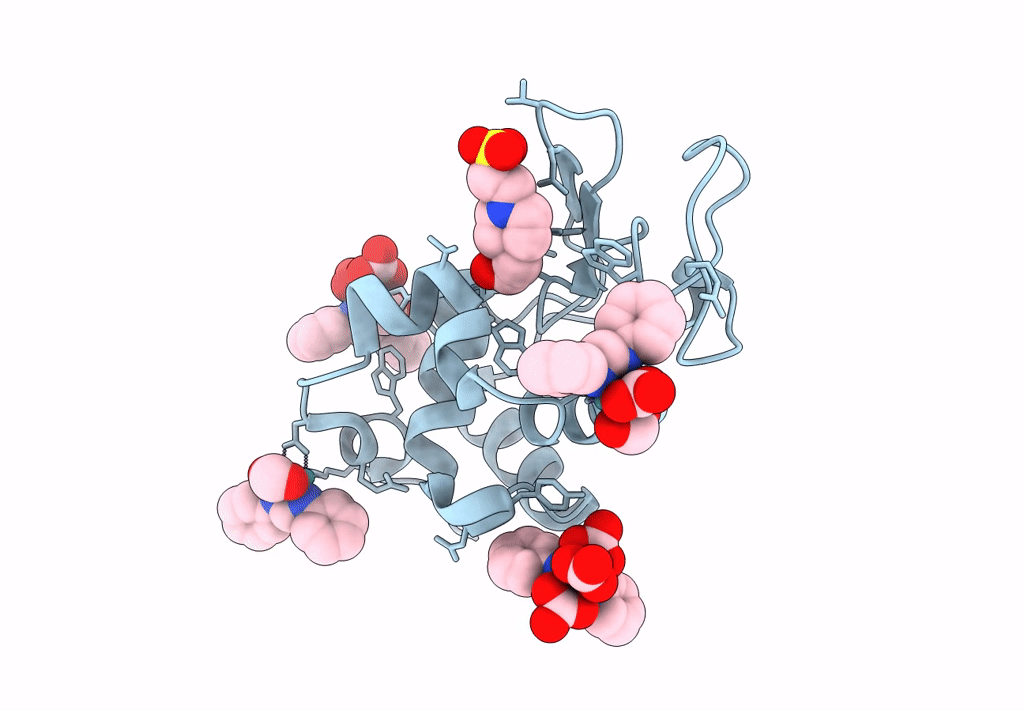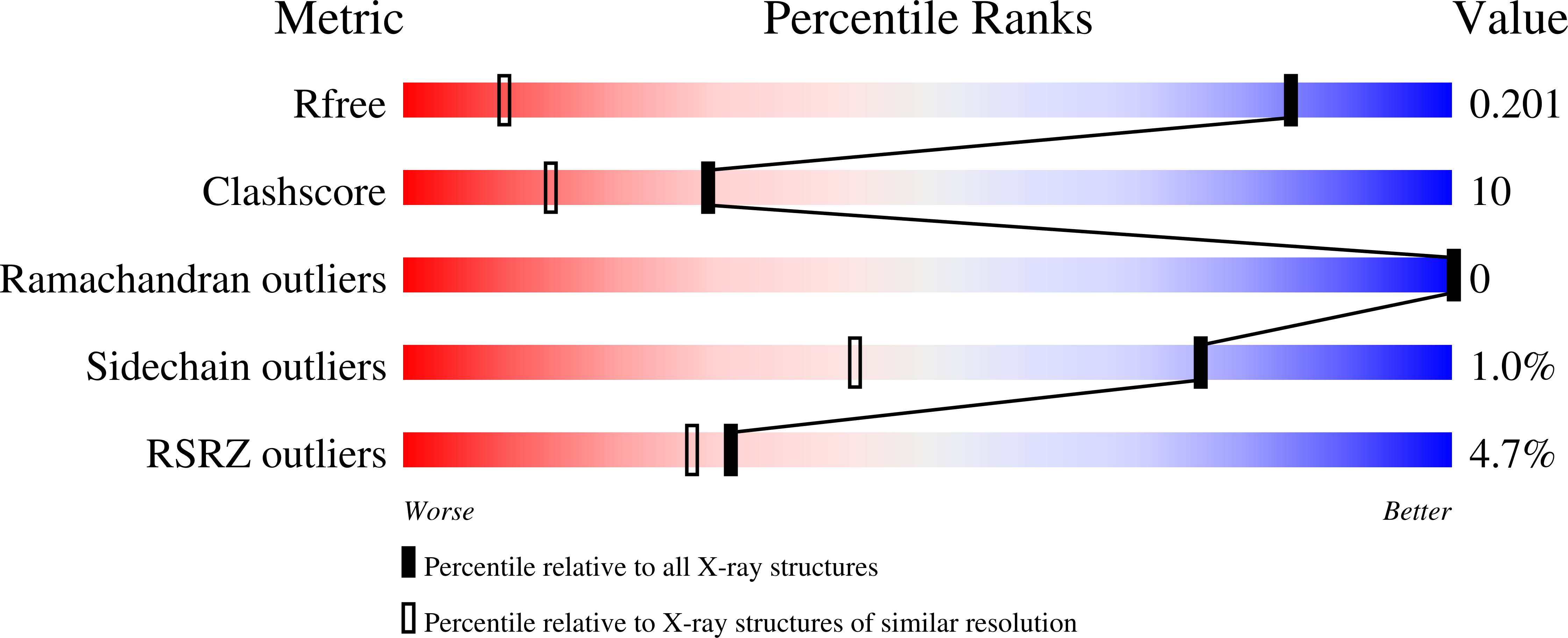
Deposition Date
2023-06-19
Release Date
2023-09-13
Last Version Date
2024-11-20
Entry Detail
PDB ID:
8PH6
Keywords:
Title:
X-ray structure of the adduct formed upon reaction of Lysozyme with K2[Ru2(DPhF)(CO3)3] in condition B
Biological Source:
Source Organism:
Gallus gallus (Taxon ID: 9031)
Method Details:
Experimental Method:
Resolution:
1.07 Å
R-Value Free:
0.19
R-Value Work:
0.17
Space Group:
P 43 21 2


